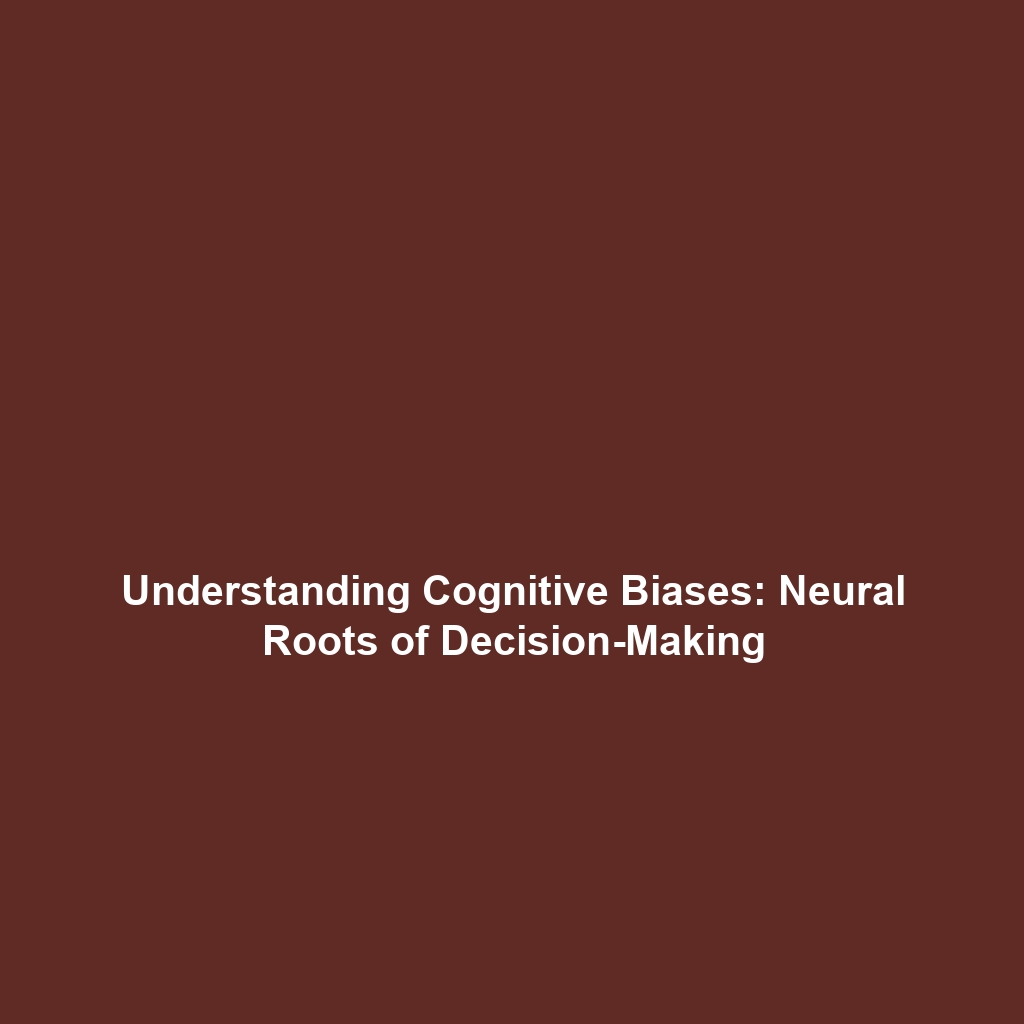Cognitive Biases and Their Neural Underpinnings: Why the Brain Tends to Favor Certain Types of Decisions Over Others
Introduction: Cognitive biases are inherent tendencies for individuals to think in certain ways that can lead to systematic deviations from norm or rationality in judgment. This phenomenon not only affects decision-making processes but also has significant implications within the realm of biomechanics. Understanding the neural mechanisms driving these biases can illuminate why the brain often opts for specific decisions over others, influencing movement, athletic performance, and rehabilitation strategies.
Key Concepts
In investigating cognitive biases, several key concepts arise that are crucial for comprehending their influence:
- Heuristics: Mental shortcuts that simplify decision-making but can lead to biases.
- Neural Mechanisms: Brain structures involved in decision-making, such as the prefrontal cortex and amygdala, which influence the cognitive biases experienced.
- Biomechanical Feedback: The way motor actions are influenced by cognitive processes, demonstrating the interplay between mind and body.
Understanding these principles helps contextualize cognitive biases in biomechanics, providing insight into how they impact physical performance and injury rehabilitation.
Applications and Real-World Uses
The study of cognitive biases and their neural underpinnings finds various applications in biomechanics, notably:
- Sports Psychology: Implementing training regimes that consider how biases influence athlete performance.
- Rehabilitation: Tailoring recovery programs by understanding cognitive biases affecting patient motivation and risk assessment.
- Ergonomics: Designing workplaces that account for cognitive heuristics, thereby improving worker safety and efficiency.
Understanding how cognitive biases are used in biomechanics translates into enhanced performance and injury prevention strategies.
Current Challenges
Despite the benefits, several challenges arise in studying cognitive biases in the context of biomechanics:
- Measurement Difficulties: Quantifying cognitive biases accurately in a biomechanical context remains complex.
- Individual Variability: Biomechanical responses to cognitive biases can differ significantly among individuals, complicating generalizations.
- Interdisciplinary Integration: Bridging the gap between psychology and biomechanics requires collaborative efforts that are often lacking.
These challenges of cognitive biases highlight the need for improved methodologies and interdisciplinary research.
Future Research and Innovations
Looking ahead, research on cognitive biases and their neural underpinnings is set to evolve significantly, focusing on:
- Neuroimaging Technologies: Developing advanced imaging techniques to explore brain functions during decision-making in a biomechanical framework.
- Machine Learning: Leveraging AI to predict how cognitive biases affect biomechanics and improve training and rehabilitation protocols.
- Wearable Technology: Implementing smart devices that monitor cognitive load and biases during physical activities.
The innovations in understanding cognitive biases will pioneer personalized approaches in biomechanics, enhancing overall outcomes.
Conclusion
In summary, cognitive biases and their neural underpinnings play a crucial role in understanding decision-making processes within the field of biomechanics. By studying these aspects, professionals can refine sports training, rehabilitation methods, and ergonomic designs. For future reading, explore our articles on sports psychology and injury rehabilitation strategies to see how these concepts interconnect.

Leave a Reply